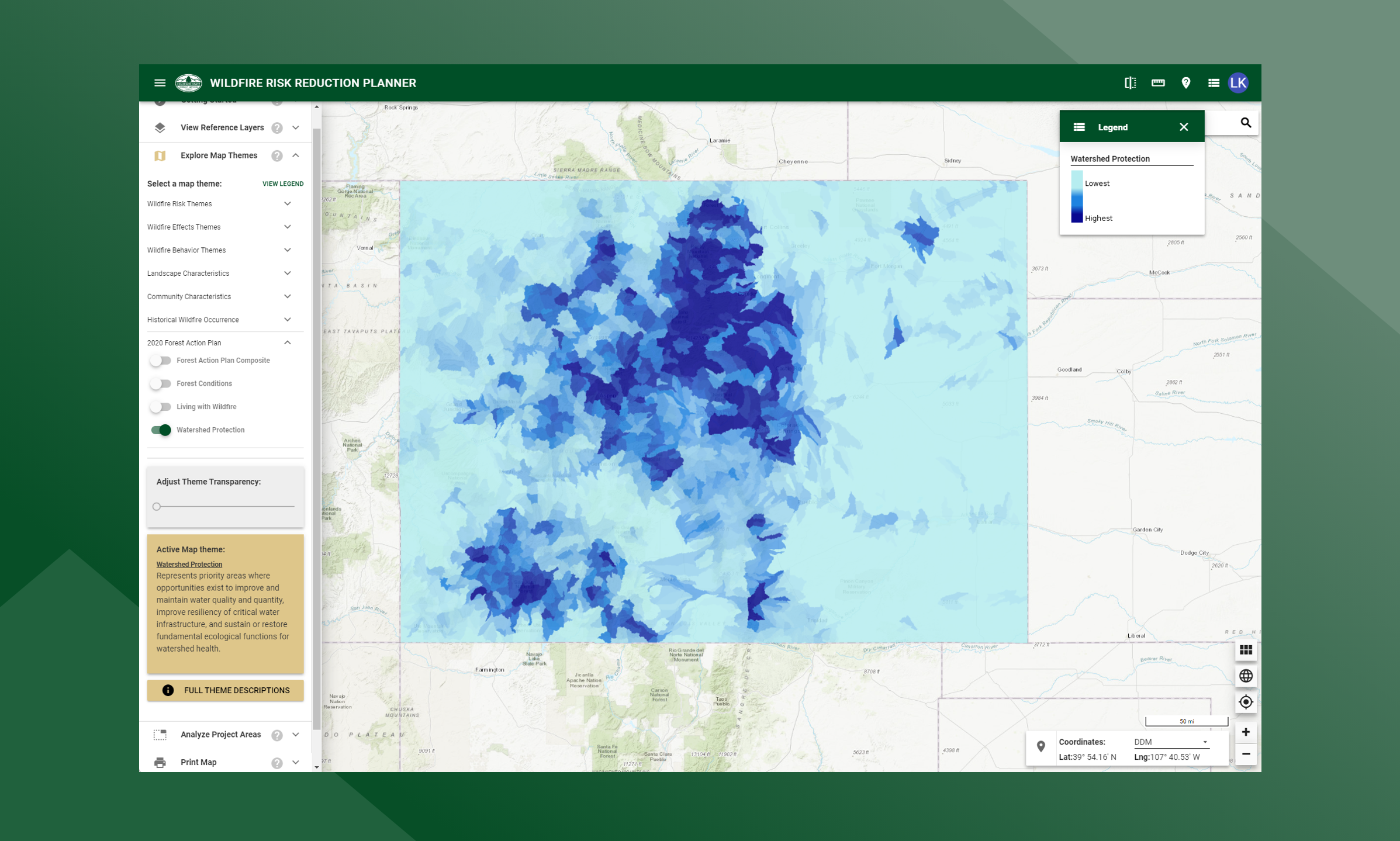Watershed Protection
Represents priority areas where opportunities exist to improve and maintain water quality and quantity, improve resiliency of critical water infrastructure, and sustain or restore fundamental ecological functions for watershed health.
Colorado’s forested watersheds deliver clean water to residents, 18 other states and Mexico, and provide the biological diversity needed for a future that is balanced both socially and ecologically. Current and expected future conditions, including persistent droughts and uncharacteristic wildfires, have and will continue to negatively impact forest health and the source water and habitat these forests provide. Water is an increasingly limited resource in Western states. Therefore, practicing forest management to improve forest health is critical to protecting and enhancing this precious resource.
This layer was derived from the 2020 Colorado Forest Action Plan Watershed Protection Theme. For this theme, data were integrated from the Colorado Department of Public Health and the Environment’s Source Water Assessment and Protection (SWAP) Program to improve consistency with other statewide prioritization efforts. These included municipal drinking water intakes served by area, surface water zones, groundwater under the influence of surface water zones, groundwater zones, conveyances — open channels, ditches, open-channel tunnels, surface water diversion intakes, surface water source intakes, groundwater under the influence of surface water intakes, and groundwater wells. Predicted post-fire erosion rates were also incorporated (Miller et al. 2011; 2023). For more detailed information, please refer to the 2020 Colorado Forest Action Plan.

